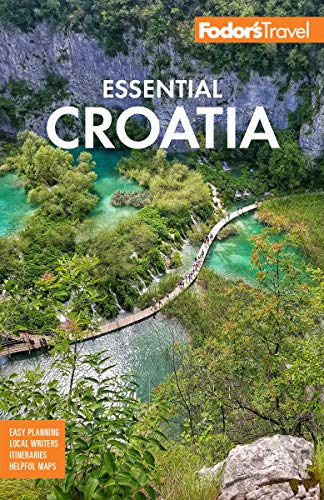There’s no doubt that a visit to Vukovar hurts. As you visit the sights, the story of what happened here will slowly unfold, made even sadder by the glimpses of what a beautiful city of culture this once was. It’s a place that holds a tender spot in the hearts of most Croatians, and it will earn a spot in yours too. Today, it is as much the scene of urban renewal as it is of destruction, and this is a good time to visit, as Vukovar recovers from its painful past and strives to regain its former vitality.
In 1991, Vukovar was a prosperous city. Located at the confluence of the Danube and Vuka rivers, it had a lovely ensemble of Baroque architecture, fine museums, and many restaurants. It was named after the ancient Vu?edol culture that inhabited a site 5 km (3 miles) downstream from the present-day city some 5,000 years ago. The area was later the site of a Roman settlement, and by the 11th century a community existed at the town's present location; this settlement became the seat of Vukovo County in the 13th century. After Turkish rule (1526–1687), almost all of Vukovar and environs was bought by the counts of Eltz, a German family that strongly influenced the development of the town for the next two centuries and whose palace is home to the town museum.
When Yugoslavia started to break apart in 1991 and Croatia declared independence, the JNA (Yugoslav People’s Army) and Serb militias began seizing control of areas with a large Serbian population. Vukovar, which at the time had a mixed population of 47% Croatians and 37% Serbians, was steadfastly claimed by both sides. A battle for the city ensued; it was up to lightly armed soldiers of the newly created Croatian National Guard, as well as 1,100 civilian volunteers, to defend it. During the 87-day siege, 12,000 shells and rockets were launched daily in the fiercest European battle since World War II. Those who had not fled Vukovar in the beginning became trapped inside, taking refuge in Cold War–era bomb shelters. On the 18th of November, the defenders of the city, running out of ammunition, numbers, and strength, could hold on no longer and Vukovar fell. The once-lovely city was reduced to rubble. More than 30,000 Croatian residents were deported, thousands were killed, and thousands more are still reported as missing. Several military and political officials have since been indicted and jailed for war crimes, including those involved in the notorious Vukovar hospital massacre.
In 1998, Vukovar was peacefully reintegrated into Croatia and the slow recovery process began. Even ten years ago, it would have been unfathomable that a visit here could involve anything other than war, but today there are plenty of ways to pass your time. There are new modern shopping malls and cinemas, the Eltz Castle and the Franciscan Monastery have been rebuilt, and the ultra-modern Vu?edol Culture Museum is the first step in a planned archaeological park. Vukovar is also a stop along the Danube bike path network, attracting cycling groups each summer, and its proximity to Ilok has made it a stop on many wine tours. The center is once again full of busy cafés and bustling markets, and there is a six-day Vukovar Film Festival every August.
Yet the memories are never far away. Next to brand-new structures are the burnt-out frames of old buildings. Walls are still pockmarked, houses remain empty, the population is now half of what it was pre-war, and although it is mixed, the two ethnic communities remain divided. There is hope in the air, but it’s usually not long before a conversation with a local will, inevitably, turn to the past. In a poignant reminder, one cannot help but notice a steady, somber stream of pedestrian traffic to one of Vukovar's most conspicuous sites: a tall, simple white cross situated at the tip of a narrow causeway overlooking the Danube, with inscriptions in both Cyrillic and Roman letters, honoring victims on both sides. With memorials and sites all around town, Vukovar is a living war museum and an important and worthwhile stop on any Croatian itinerary.





